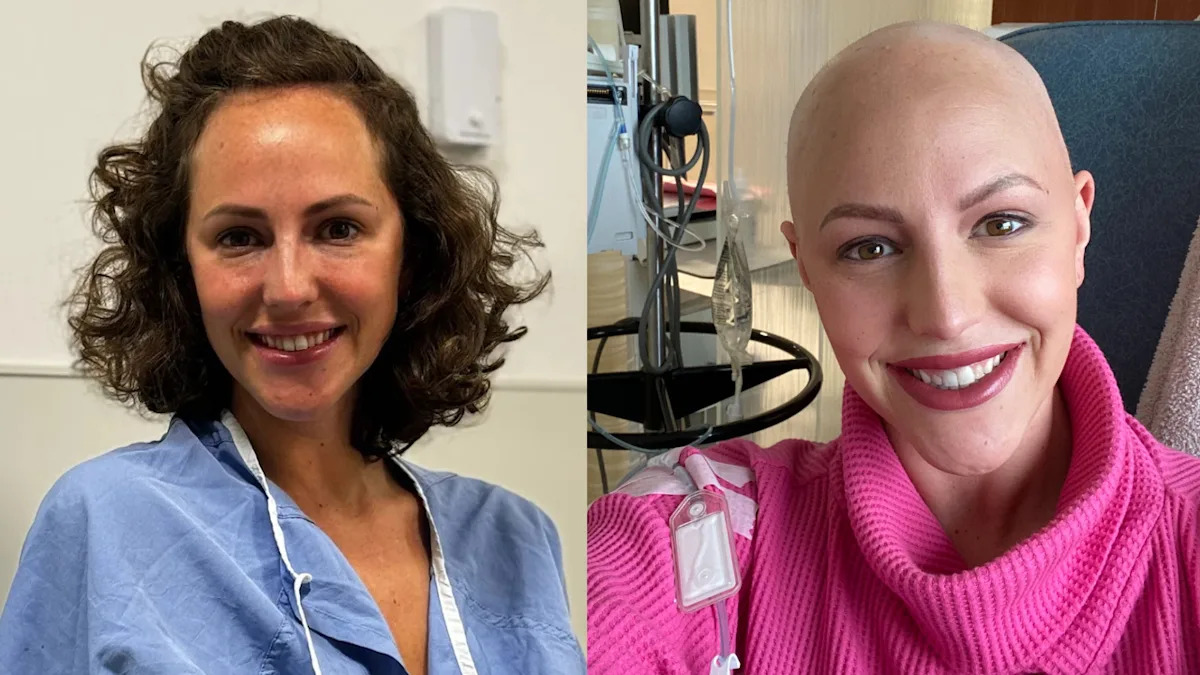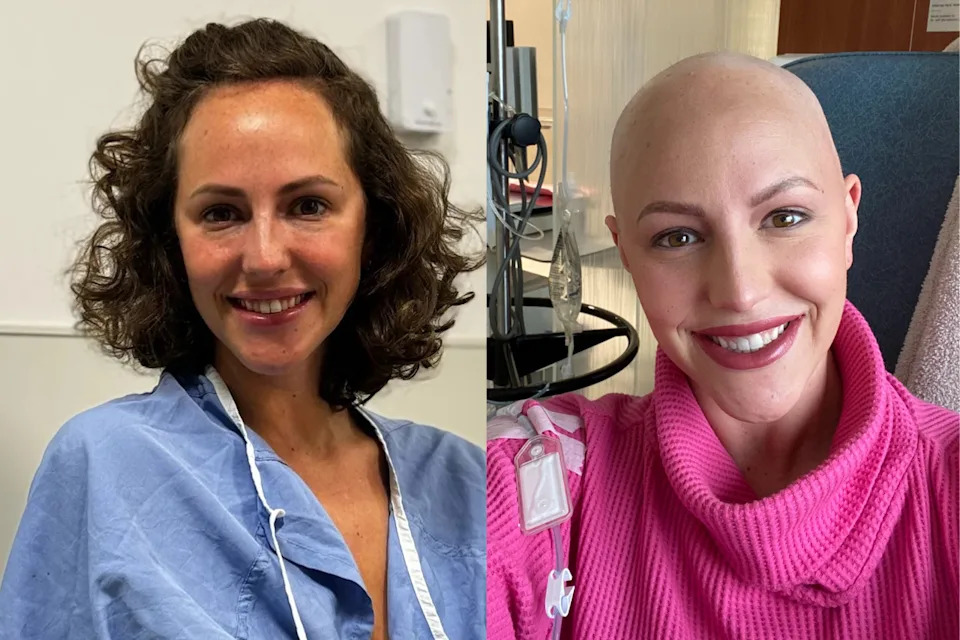
Robyn Goldman was diagnosed with breast cancer in her early 30s. (Images courtesy of Robyn Goldman)
Breast cancer isn’t something Robyn Goldman ever thought she’d have to experience — let alone in her 30s. In October 2021, Goldman was diagnosed with triple-negative breast cancer, a form of breast cancer in which cancer cells don’t have the hormone receptors to grow. Although the diagnosis was life-altering, the then 33-year-old said she had known for more than a year it could be cancer — and was fighting to get the care she knew she needed from doctors.
“The lump was obvious,” she told Yahoo Canada in a 2024 interview, adding that it was even visible through some tight-fitting shirts. “It was alarming, and it didn’t feel like the rest of my breast. … Call it intuition, but I knew exactly what it was. It didn’t hurt, it didn’t swell, it just felt like a hard marble.”
Goldman’s path to diagnosis was difficult. She first noticed the lump in November 2020 and contacted her doctor for a physical that did not include a breast exam. When she returned to her doctor in September 2021 seeking a referral for a mammogram, she said they dismissed her concerns as having “lumpy breasts.”
This article is for informational purposes only and is not a substitute for professional medical advice, diagnosis or treatment. Contact a qualified medical professional before engaging in any physical activity, or making any changes to your diet, medication or lifestyle.
“I felt gaslit by the health-care system,” she said. “I was told I was too young and healthy — even a mammogram wasn’t offered to me.”
Less than a week later, Goldman went to a Toronto emergency room, where she received an ultrasound and was scheduled for a follow-up appointment for a biopsy in mid-October.
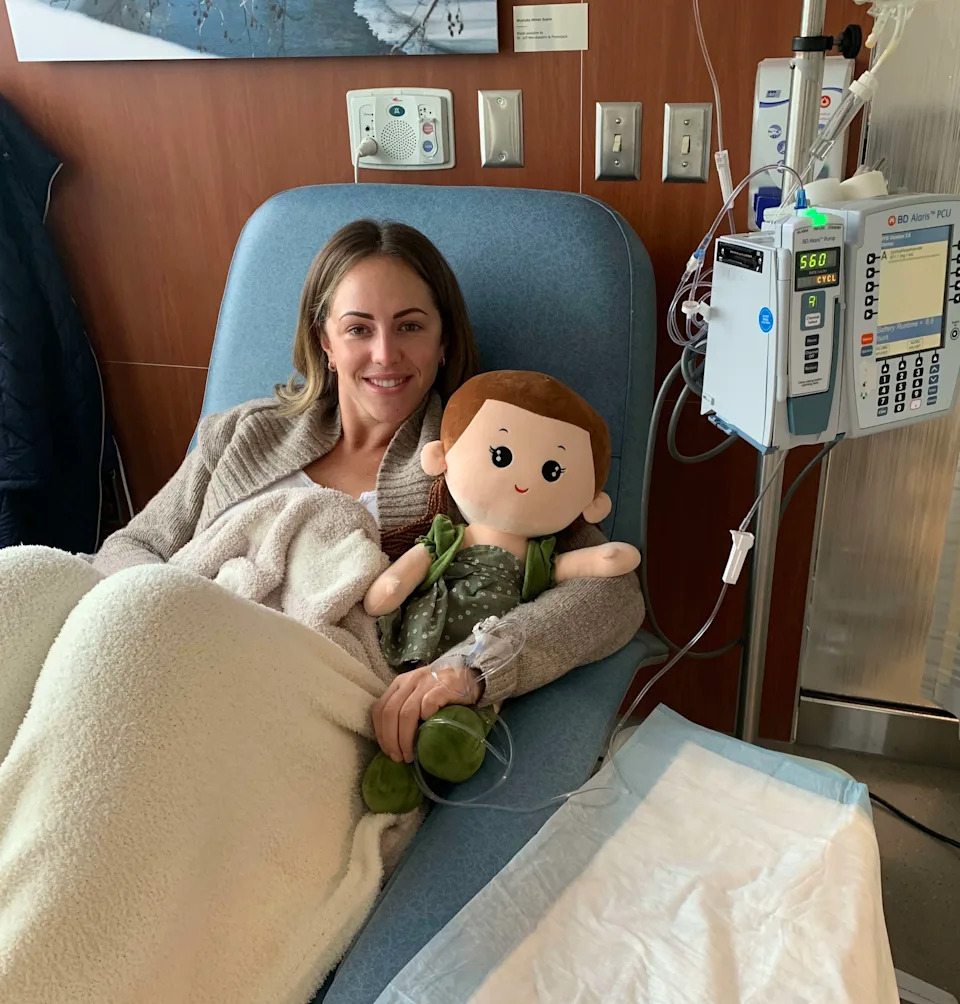
Robyn Goldman was diagnosed with breast cancer when she was 33 years old. (Image via Robyn Goldman)
“My tumour jumped off the screen,” she said. “The inevitable phone call confirmed what my body had been telling me. My only concern leading up to it was how far along the cancer was. Maybe that helped me prepare. I think I had already accepted it.”
More Canadians under 50 are being diagnosed with breast cancer
October is Breast Cancer Awareness Month in Canada, a time when it’s important to reflect on the impact this disease has on thousands across the country each year. According to the Canadian Cancer Society, 2,600 Canadians are expected to be diagnosed with the disease in this month alone.
For 2022, the Public Health Agency of Canada (PHAC) indicated that around 28,600 women would be diagnosed with breast cancer. The Canadian Cancer Society’s latest data suggested that in 2024, there were around 30,800 people diagnosed with breast cancer.
Traditional breast cancer awareness efforts are directed towards women in the 50s, and 83 per cent of breast cancer cases occur in people over age 50, according to the PHAC. But recent data showed a significant increase in cases for patients in their 20s, 30s and 40s.
Although some provinces — such as British Columbia, Ontario and New Brunswick — allow women to self-refer themselves for breast cancer screening, others limit access to publicly funded mammograms to women aged 50 and over. The existing guidelines make it difficult for women under 40, like Goldman, to have access to mammograms.
The obstacles she faced in order to receive her breast cancer diagnosis still weigh on Goldman; her emotions are still raw about what could have happened if she didn’t advocate for herself.
“I’m angry because I feel our system is ignorant and not willing to act preventatively,” she said. “However, you have to change the framework before expecting changes. I’m furious at [my doctor], but she was just doing her job based on what the government tells her to do.”
Medically-induced menopause and fertility treatments
As a woman in her 30s, Goldman was hoping to explore her fertility options before beginning chemotherapy. High doses of chemotherapy drugs can cause permanent fertility changes and studies report female cancer survivors’ chances of becoming pregnant are “40 per cent lower compared to women of the same age.”
“At the hospital where I was initially diagnosed, fertility wasn’t even mentioned, let alone included in my treatment plan,” Goldman said. In November 2021, she decided to switch hospitals for treatment. “One one of the first things brought up was fertility. I was told that chemotherapy will certainly put me in medically-induced menopause.
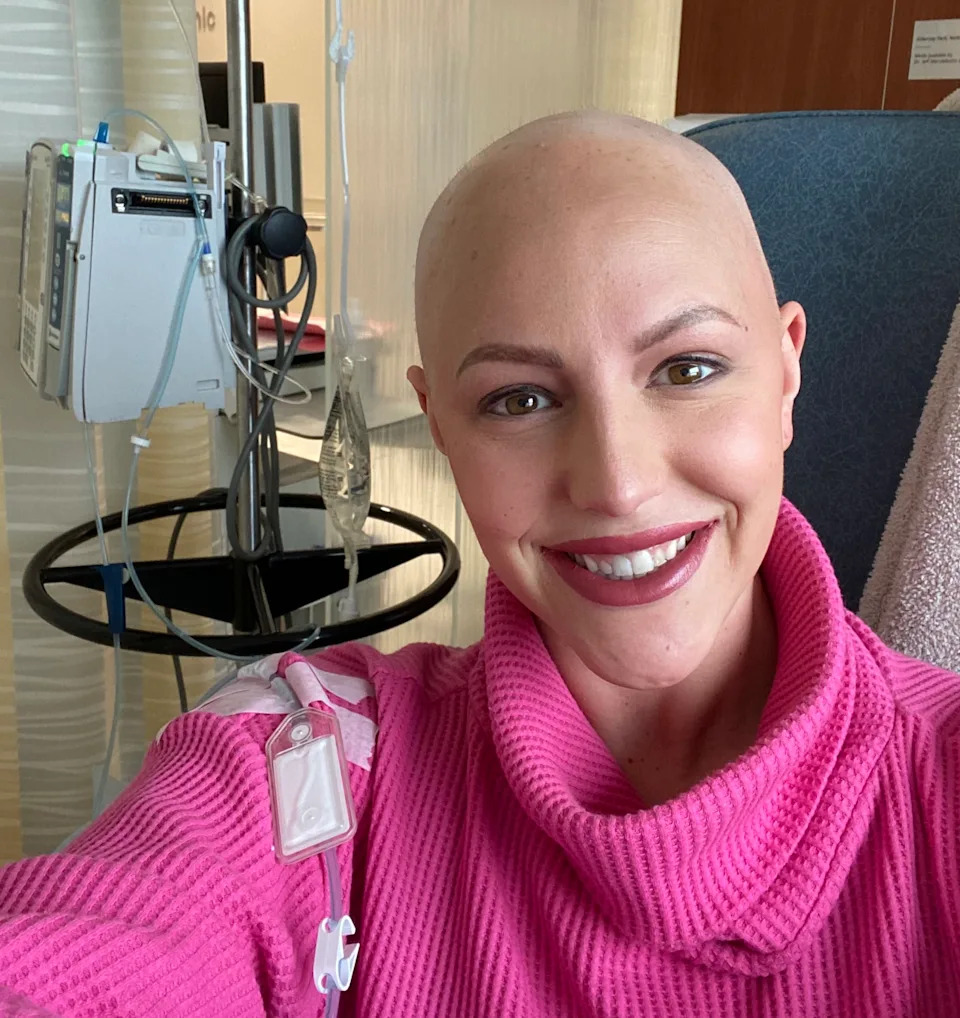
Robyn Goldman spoke to Yahoo Canada about the physical, emotional and financial toll of breast cancer in your 30s. (Image via Robyn Goldman)
Goldman’s new physician encouraged her to look into freezing her eggs as “an insurance policy” if she chose to have children.
Although her team of fertility doctors had hoped to preserve 12 to 15 eggs, only nine were retrieved before Goldman began treatment. Goldman noted her fertility clinic contacted her oncologist asking to push her chemotherapy date by a week to try and retrieve more eggs — but was told no.
The urgency made Goldman even more aware of the severity of her illness: “If I had waited a year to get diagnosed, would I even be alive?”
Dating during cancer
Two days after she was diagnosed with breast cancer, Goldman’s long-term boyfriend broke up with her. Despite her life-altering diagnosis, Goldman was determined to stay in control of her life by doing the things she loved.
“I did everything that brought me joy because the alternative would have been to sit at home with my parents,” she said. “I’m young, and I didn’t want to sit at home on a Friday night without cancer, let alone with it. My life wasn’t over because I had cancer.”
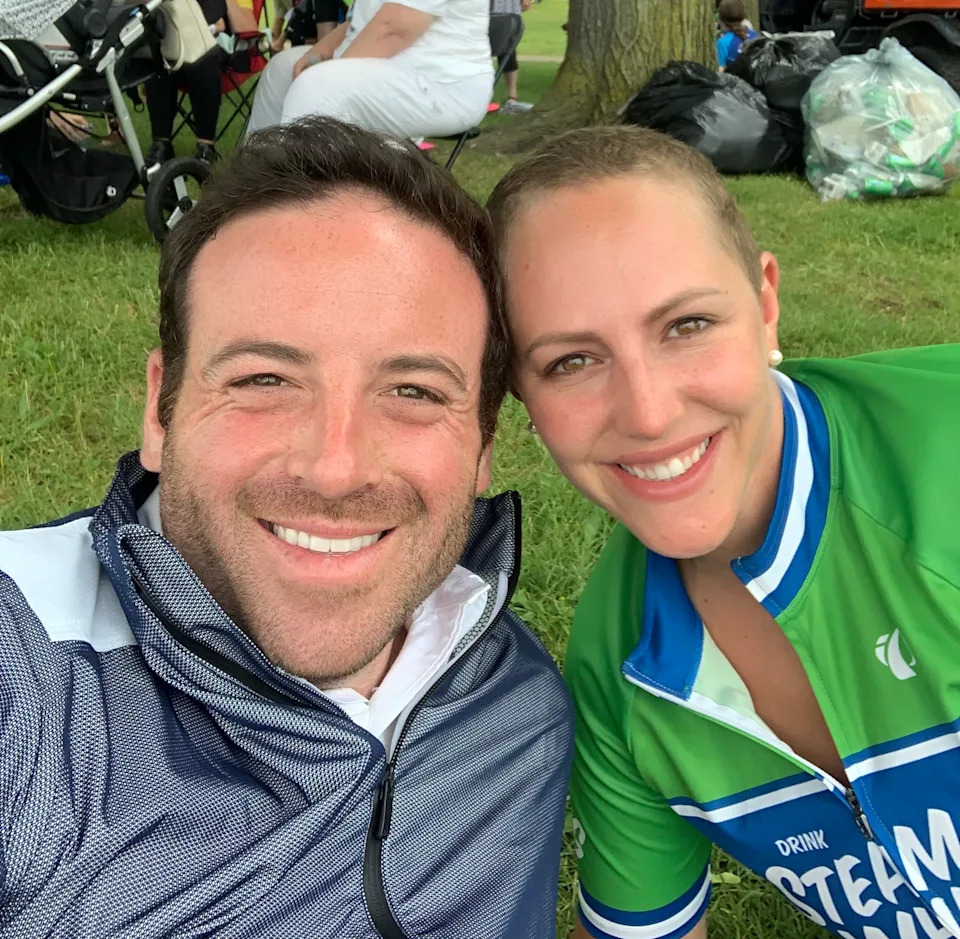
Robyn Goldman met her partner at the beginning of her breast cancer treatment. (Image via Robyn Goldman)
Dipping her toe into the dating world with cancer had its ups and downs. After a date ghosted her after she shared that she had cancer, she decided to take matters into her own hands.
“I switched up my dating profile, and included a photo of me with short hair, and honestly, I got a lot more matches than I expected,” she said. “My first date with my now-amazing-boyfriend was on the first day of radiation — May 30, 2022.”
Goldman decided very early in her cancer journey to document her treatment on social media as a creative outlet and to keep her close friends in the loop. Despite receiving messages from people offering support, there were times when she felt lonely.
Goldman also reflected on how asking for help can be challenging: “Sometimes actions speak louder than words. In our culture, we don’t know how to offer or ask for help. I could have asked someone to drive me to treatment, but nobody offered. I remember shovelling snow for two hours after a snowstorm to make it to my bloodwork appointment so I wouldn’t have to postpone chemo. That was one of those days when I wished someone had asked, ‘Robyn, do you need help?'”
Hidden costs of cancer
Goldman had just started a new job when she was diagnosed with cancer. By the time she qualified for benefits, her illness was considered “pre-existing” and meant that insurance couldn’t cover many of the expenses her illness incurred.
A 2024 survey from the Canadian Cancer Society found that 30 per cent of Canadians reported going into debt to pay for the out-of-pocket costs of a cancer diagnosis. An additional 10 per cent said they required help to cover the expenses.
It was infuriating to have to fight with insurance companies for coverage.
Robyn Goldman
An article in the Canadian Medical Association Journal (CMAJ) noted that public funding for take-home cancer medications varies across provinces, with coverage ranging from 64 per cent in Prince Edward Island to 94 per cent in Saskatchewan. As a result, many individuals, including Goldman, must depend on private insurance, provincial drug funding programs or assistance from pharmaceutical companies to cover the cost of unfunded cancer treatments.
“I was taking 10 pills a day, two weeks on and one week off, for six months. That would have cost me nearly $3,000,” she said. “As a young person, I don’t have an extra $3,000 lying around after all I’ve already been through. It was infuriating to have to fight with insurance companies for coverage.”
At-home medications can significantly benefit patients by reducing the physical discomfort of travelling to and from the hospital and allowing them to take their medication in the comfort of their own homes. Additionally, it helps avoid hidden costs, such as travel expenses and parking fees.
“Nobody considers these small costs,” Goldman said. “If I estimate the out-of-pocket cost of my diagnosis, it’s probably in the range of $5,000 to $10,000. I’m still recovering financially from that.”
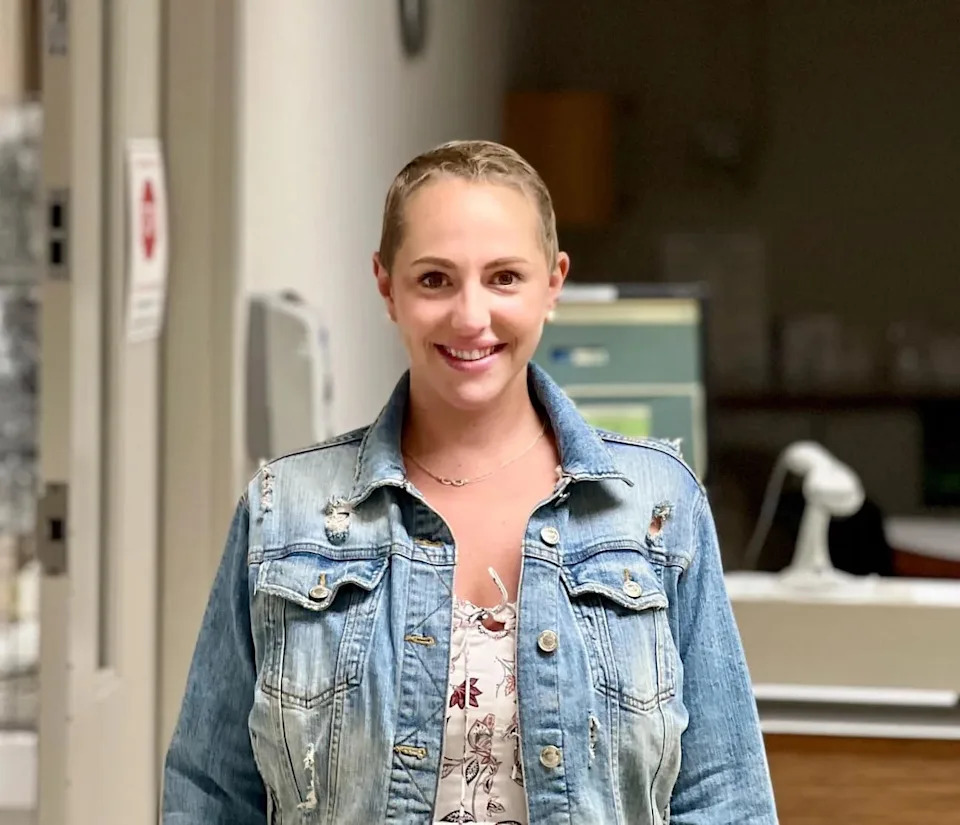
Robyn Goldman has been in remission from breast cancer for two years. (Image courtesy of Robyn Goldman)
For comprehensive treatment, Goldman also applied for a compassionate plea to get additional coverage from a drug manufacturer after maxing out her prescription allotment due to fertility treatments.
“It felt like I was jumping through hoops just to stay alive and the only way I got through it was knowing this would end someday,” she said.
Another challenge was finding mental health support, as her insurance didn’t cover therapy and it wasn’t offered to her during treatment.
“It seems like an obvious resource that should be available, but I had to beg for appointments,” she said, adding, “I haven’t received any medical follow-up for mental health or other side effects. It’s like once traditional treatment ends, you’re expected to return to normal. My life has been changed forever.”
Now in her second year of remission, Goldman said she feels “good and healthy,” but the toll cancer took on her body is evident. “I get more fatigued and probably don’t have the stamina I used to, but being active helped during my journey.”
Her one message for young women? “Listen to your body. Listen to that intuition and advocate for yourself because nobody’s going to fight harder for you than you. You have nothing to lose.”
Let us know what you think by commenting below and tweeting @YahooStyleCA! Follow us on Twitter and Instagram.

